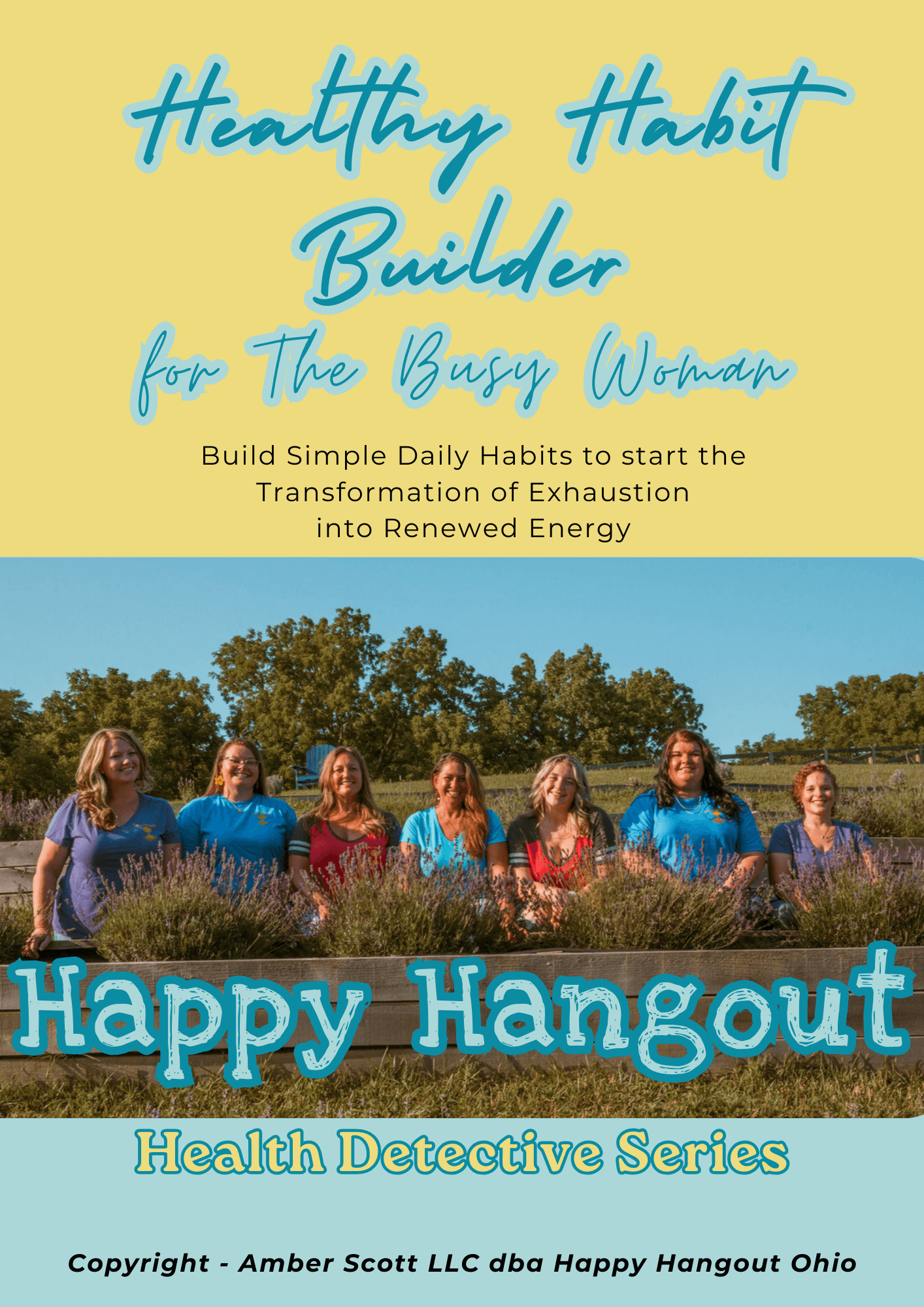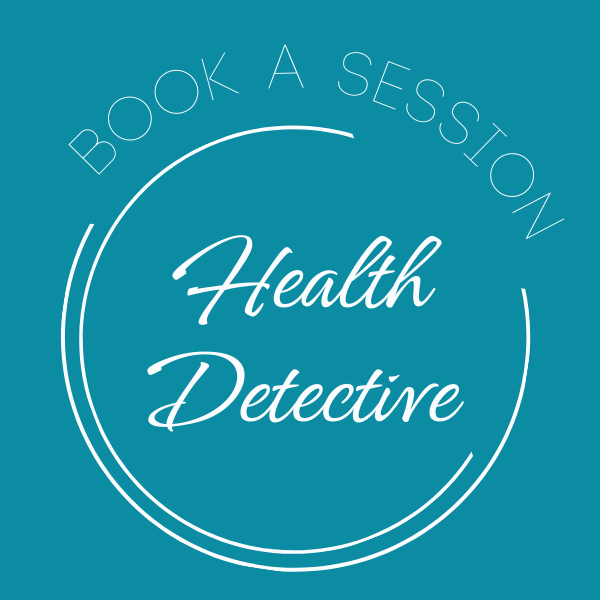Facial Scan (does NOT include Health Detective Session)$50
$50
A trans-dermal optical imaging scan for our Health Detective clients, using the same technology the American Heart Association uses to read blood flow, patterns, pressure in the face.
This product is ONLY for the Face Scan along with the resulting report, but does NOT include a Health Detective Session. If you'd like a consult to go over your scan and report, please Book a Health Detective Session.
It's pretty neat! We include this as a complimentary in your first Health Detective session.
The science:
The face scanning app combines leading-edge health assessment technology with proprietary scanning process. The result is a fast, accurate wellness scan that provides a wealth of information, including top products, services, and supplements the body prefers.
The unique, real-time measurements from the facial blood-flow analysis are incorporated into the scanning algorithm. This algorithm then determines your priority score for each biomarker in the library - over 200 biomarkers evaluated!
TOI measurements from the scan are comparable to traditional methods of measuring cardiovascular health and stress. For example, research has found that TOI heart-rate measurements are accurate to within +/- 1 beats per minute when compared against electrocardiogram (ECG) measurements.
Using proprietary analytical tools, the app establishes your baseline, which you might think of as your “normal” or “resting” score. This baseline is displayed graphically next to each biomarker. Biomarkers with a higher score than your baseline are considered “out of range,” while those that have a lower score than your baseline are considered “in range.”

What Does TOI Measure?
TOI technology can be used to measure heart rate, heart rate variability, stress levels, and more. Let’s break down these key metrics and what they can tell you about your health.
- Heart rate, (aka your pulse), is how many times your heart beats in one minute. Your resting heart rate is your pulse when you’re relaxed and not moving.
- Typical resting heart rates range between 60 to 100 beats per minute. Any values outside that range could suggest a deeper issue.
- A high resting heart rate may be due to a sedentary lifestyle or certain medications, for example.
- On the other hand, a low resting heart rate may indicate an issue such as sleep apnea or hypothyroidism.
- Heart rate variability (HRV) measures the difference in time between each heartbeat and how much it varies.
- HRV offers clues about the activity of the autonomic nervous system. This can help assess stress levels and mood. Your autonomic nervous system has two divisions: the sympathetic and the parasympathetic.
- The sympathetic nervous system handles your body’s “fight or flight” response. It’s the branch that’s activated when you’re under stress.
- The parasympathetic nervous system, also known as the “rest and digest” mode, is restorative and calming. This branch is activated when you feel safe and relaxed.
- In general, a higher HRV means the parasympathetic nervous system is dominant. A lower HRV means fight-or-flight mode is active.
- Medical settings typically use an electrocardiogram (ECG) to measure HRV. This method involves attaching sensors to the skin to detect your heart’s electrical activity. Transdermal optical imaging provides a less invasive way to measure HRV.
- Blood flows to different areas of your face depending on whether the sympathetic or parasympathetic branch is dominant. TOI uses those blood flow signatures to measure HRV and assess stress levels and psychological states.
- Breathing Rate Also known as respiratory rate, breathing rate is how many times you inhale or exhale per minute.
- Twelve to 20 breaths per minute is considered a normal resting breathing rate.
- Anything less than 12 or over 25 breaths may be a sign of a medical condition.
- Similar to heart rate, breathing rate is controlled by the body’s autonomic nervous system. Issues like anxiety, illness, and allergies can cause a breathing rate that’s higher than normal, while things like sleep apnea and hypothyroidism can cause a lower-than-normal breathing rate.
- As breathing rate is controlled by our autonomic nervous system, this rate can be accurately determined by measuring facial blood-flow signatures as well.
- Skin Age
- TOI analyzes the surface of the face to determine skin age using an artificial intelligence (AI) prediction model. If your skin age is older than your actual age, it may be due to factors such as genetics, spending too much time in the sun, smoking, poor diet, and more.
- It should be noted that lighting can impact skin age readings as well. That’s why scanning in a well-lit area with even light distribution is recommended. Preferably in the morning next to a window to allow the natural light to do its best work.
- Mental Stress
- TOI research reveals that blood flow in the face happens in different regions of interest. Blood flow patterns in different facial regions often correlate with certain psychological and emotional states.
- For example, one study found that when subjects experienced a bitter taste, blood flow in the nose decreased. But pleasant, sweet tastes increased blood flow in the eyelids.
- Facial blood flow patterns, heart rate, and HRV all offer clues about a person’s nervous system activity and mood. Since TOI captures all this data remotely, it shows promise as a tool to assess an individual’s stress levels.
- Blood Pressure
- Blood pressure measures how much force your heart uses to push up against the walls of the artery. Blood pressure is given with two numbers: systolic and diastolic.
- Systolic pressure, or the higher number, is your blood pressure while your heart is beating. Diastolic pressure, or the lower number, is your blood pressure between beats.
- People with high blood pressure, or hypertension, are at an increased risk of developing other health problems. This includes heart disease, stroke, and heart attack.
FAQs:
Q: Can I use this scan in a Web browser?
No, Link can only be used on an Apple or Android mobile device.
Q: What are the minimum software requirements for this scan?
Have a cell / mobile phone with a minimum: iOS 14.2 with iPhone 8 or Android 13
Q: How accurate is transdermal optical imaging?
Recent studies show that TOI rivals traditional methods of measuring heart health.
- One 2018 study compared the accuracy of TOI data to ECG. They used TOI to measure the heart rate and HRV of 136 healthy adults. They found that TOI data strongly lined up with ECG measurements.
- Another 2019 study from the American Heart Association assessed the accuracy of TOI for blood pressure. Researchers compared TOI to standard cuff-based blood pressure measurements. They found that on average, TOI measured pulse, systolic blood pressure, and diastolic blood pressure with an accuracy of 95%.
- Along with the physical component of cardiovascular health, we know that stress creates chemical changes in the body that impact blood pressure and heart rate. We can conclude that these measurements combined with other blood flow data can give us accurate insight into mental stress levels as well.
Q: How can TOI benefit ME and MY Health?
TOI provides a convenient way for people to track their vitals all from the comfort of home
- This helps people monitor health conditions between visits to their health and wellness providers. But it also empowers them to address any health concerns before they get too serious.
- Previously, collecting health information such as vital signs required an office visit. Now with TOI, health practitioners and wellness providers can measure heart rate, HRV, stress levels, and more remotely.
- Plus, TOI is far less invasive than traditional medical tests such as blood pressure cuffs and ECGs. Its ease of use makes it more likely that people will stay diligent in tracking their health data.
- And while further research is needed, TOI also shows promise as a way to identify risk factors for hypertension and other related conditions. This can help those with cardiovascular issues monitor their conditions and address problems before they become serious.
- While TOI technology is in its infancy, it has the potential to change how healthcare is monitored in the future.
- Once you have purchased one scan, you will be given the opportunity to purchase a bundle, or even purchase the software/app for yourself to have at home for you, your spouse, kids, parents, etc. Keep an eye on your email from me after your purchase!
NEXT STEPS:
1. Purchase the Face Scan on this page
2. Complete the additional information needed to set up your scan profile
3. Download the app (link will be included in your email)
4. Run the scan in the morning, with a fresh clean face in good lighting and have your report within 60 seconds on your phone.
5. Easy Peasy!
After Your Purchase:
You will receive an email with your confirmation and a brief intake questionnaire so we can set up your scan profile if this is your first time scanning with us. If this is not your first time, you can ignore that new intake link.
Then you will download the app (link provided in the email).
You'll get a second email once your profile is complete and you'll be able to run your scan.
The second email will include all the information you need to include instructions on how to scan as well as how to read your scan after it is complete.
Note:
If you'd like to just purchase this scan and get the report directly emailed to you, without a Health Detective Session, you can purchase this scan on this page. It will not include a Health Detective session though. You'll need to book a Health Detective Session if you want help interpreting those results or to discuss a protocol or path forward.
*This product purchase is only for the face scan and the report that will be emailed directly to those that want to do their scan on their own and are ready to interpret the scan on their own. We do include instructions on how to interpret it after you make your purchase.
Disclaimer:
Please review the disclaimer at the footer of this page for full details. Here's the summary level of the disclaimer - this is not medical advice, nor is it treatment, diagnosis, prevention, providing a cure, etc. It is simply an educational tool.













